Rerun: This article was first published on BackcountryMagazine.com April 2009
Ever since I first skied it, all I ever wanted in a telemark binding – the mythical Tele Grail be damned – was a free pivoting Hammerhead. It took almost a decade, but 22 Designs has finally delivered one. Axl’s debut couldn’t have waited much longer. In the intervening years every other extant telemark binding company has managed to offer a touring model. However, none of them ski like a HammerHead. Axl does.The single, powerful spring that sticks out the front to give the Hammerhead its namesake look is replaced with two flat-wire wound springs behind the toe. However, the dual underfoot cables with an adjustable pivot point are retained, yielding an equivalent feeling and transfer of power through the ball of your foot while telemarking. A key part of this sensation is where the spring housing contacts the sole of your boot to impart the power of the springs—specifically at or behind the ball of foot, or bellows flex point (depending on foot size). As a result, pressure is sensed exactly where you want it, increasing the sense of power driven through the rear foot while telemarking.
At the recent (Apr09) Backcountry Magazine annual gear test we compared Axl and Hammerhead side by side on the same pair of skis (mounted right and left respectively). Everyone agreed that:
Axl#2 ~ HH#3 • Axl#3 ~ HH#4 • Axl#4 ~ HH#5
At the lower settings, Axl felt a tad more powerful, at the higher settings, the difference was harder to detect.
Although the dual springs deliver plenty of power, the retaining swages on the cable are excessively long, making it impossible for the heel peg to be positioned close enough to the toeplate for feet smaller than mondo size 27. This will be changed for the final version to something shorter and cleaner. A smaller version will be available for smaller boots with the break point somewhere around mondo 25.
Adjusting the pivot location with Axl is much easier than with Hammerhead. Simply pull out a single pin and move it fore or aft. A spring-loaded tab prevents it from falling out. Best of all, moving the pin can be done with your fingers only since the locking tab is easily depressed with just a fingernail. Unfortunately the power pin doesn’t appear to be strong enough to withstand long term abuse since a few of the limited beta testers have already reported it bending. To switch between turning and earning modes, stick the tip of your ski pole in the plastic cup in front of the toe and lever the L-shaped bar forward or back. This mechanism seems a bit resistant to movement, potentially causing damage to ski pole tips. Compared to competitor’s switches, Axl’s mode switch is a bit finicky. Switching to tour mode, in particular, requires you to move the lever back a bit until the pole tip can fully seat in the bucket, and then you pull back a second time to fully move it to the rear. For returning to turn mode, I recommend putting your pole tip at the rear of the bucket, and pulling back again so that you lever your pole off the front of the toe bar to move the lever forward.Skepticism remains that the mode switch might ice up somewhere along its length, preventing mode changes without chipping ice away. The presence of exposed metal means it is possible, and I’ve heard of others experiencing it but it didn’t happened to me in my brief experience with it.
In touring mode Axl can deliver a healthy 50°+ range of free pivot motion. However, when conditions are prime for icing, warm temps with cold snow, or sticky fresh snow, the snow can build up in more than one place.
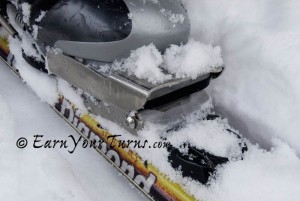
When the snow is moist, every step packs the snow under the duckbill creating a bumper of ice that reduces ROM. It is very annoying.
It is also possible for snow to glam on to the underside of the spring housing, creating a large chunk of ice that prevents your foot from resting flat while turning. A simple check at the top of a climb and a strategic whack to knock the ice off cures that problem. Again, it would be better if it weren’t necessary, or less likely to occur.
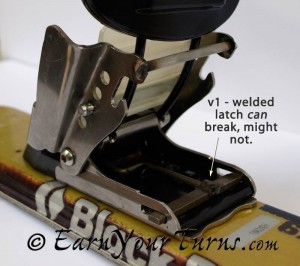
The devil's in the details. Welded rear spreader bar and locking bar suggest beta status. Oh, right, it IS a beta version.
Retained with Axl is Hammerhead’s six-hole mounting pattern, except Axl’s pin line is actually 5mm back, so you need to move the binding 5mm forward for pin line to be the same as for a Hammerhead. I didn’t bother switching and couldn’t tell the difference. (Axl Mounting Template)
Evidence suggests that the standard four-hole pattern isn’t quite up to the task of holding a binding securely to a ski while telemarking. Unlike alpine bindings where stresses are distributed between toe and heel, and only spike when releasing, telemark bindings concentrate all their forces in a smaller area, and like a jack-hammer, repetitively exert forces to break it. The six-hole pattern appears more durable, and for most telemarkers, up to the task.
Several people who mounted without a jig had issues with screw heads protruding above the top surface of the plastic baseplate that prevented the mode switch from moving freely. Since not everyone has access to a Hammerhead mounting jig, the dimensions of the baseplate ought to be adjusted to accommodate a less than perfect mounting job.
Axl isn’t the lightest binding out there, but in the 75mm realm it is unquestionably the most powerful with a free pivot. Less weight would certainly be desirable.
There are bound to be a few other problems with Axl that come to light in what days remain of Winter 2009. The good news is the decision by 22 Designs to follow in the footsteps of the HammerHead’s originator, Russell Rainey, and deliver Axl to customers using a Beta Test program. Unlike most manufacturers who develop beta products and distribute them to a select group of testers, the Hammerhead beta test program used customers who paid full price for the untested product and became the real world test team. In return for paying up front, and providing honest feedback on the products shortcomings, they receive a free upgrade to the finished product. The beauty of this program is the testers have a stake in the outcome since they paid to join and they want their money’s worth. As a result of this program, after half a season of beta testing the ensuing final version of the Hammerhead has remained virtually unchanged for nine years, a feat no other telemark binding can claim.Since it took so long for Axl to get developed I was beginning to think maybe the heirs to Hammerhead weren’t up to the task. The proof is in the product. Axl delivers Hammerhead power with a free pivot. There are a few kinks in the design, just as there were with the beta version Hammerhead. With luck, the beta test program will yield the type of feedback necessary to improve the design to survive long-term real world abuse and Axl will become the new standard for telemark performance in and out of bounds.
Link to 22 Designs
© 2009

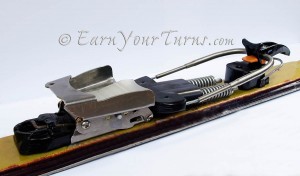
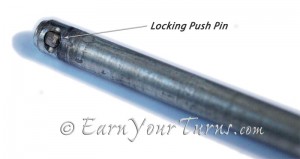
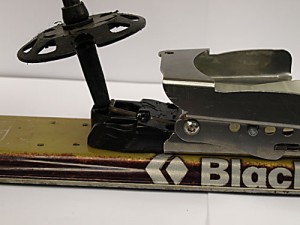
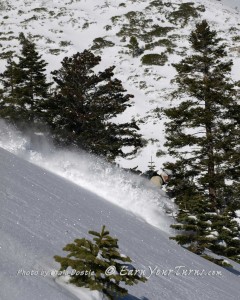
4 pings
[…] Review: 22 Designs Axl (beta version, 2009) Review of the long awaited free-pivoting version of the Hammerhead telemark binding. Source: http://www.earnyourturns.com […]
[…] 2012 Related Posts: Review of 22 Designs Axl Review of 22 Designs Axl (beta version) Review of 22 Designs Hammerhead (beta version) […]